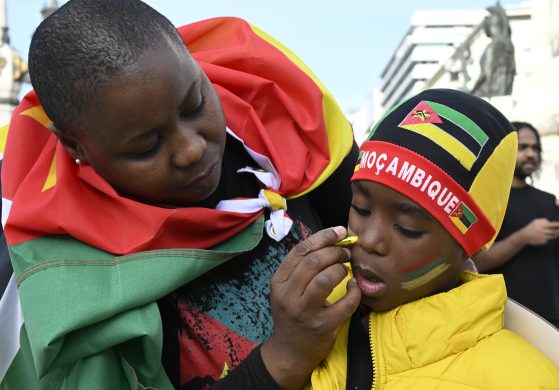“Farmer Managed Natural Regeneration” hedder et system, som angiveligt giver langt bedre udbytte, både i gode år og i strenge tørketider – og samtidig restituerer dele af det sårbare miljø.
NIAMEY, 20 March 2012: With his weathered (slidte) hands ingrained with dirt, it is easy to tell Rabiou Mahamadou is a farmer.
Like many people in Niger, it is how he has fed his family for his whole life. In the past, he would have used techniques handed down from generation to generation. But today, things are different.
Today Rabiou has on a suit (ordentligt sæt tøj), and is excited to greet the man who helped send him from Zinder to special training at an international research institute in Niamey, the capital of this poor Sahelian country.
There, he learned a new way to farm, one that has made him so successful that other farmers in his area are constantly seeking his advice, trying to figure out how he does it.
“Before on my farm I used to sow five even seven times before the crops would sprout (spire). But now the first time it is a success,” Rabiou says, adding: “Even though the harvest was bad, I am thankful. I filled a granary (lille kornlager) for myself and filled another one for my mother from my farm.”
He proudly surveys his nursery (såbede), and his farm. It is the dry season, and the field looks empty, with left over stalks (strå) from past harvests, broken up by the occasional cluster (klynger) of trees poking through. Those trees hold the key.
Farmer Managed Natural Regeneration
Those trees are at the root of the success of a programme called Farmer Managed Natural Regeneration (FMNR).
“Before we used to cut all the trees from the farm and let the field just barren (nøgen), but now we learned that we are supposed to leave the trees where they are,” Rabiou says.
It is something that sounds almost counterintuitive (imod al lærdom). All over the world you see farmers clear their fields of all other foliage (bladhang). After all, they are trying to grow grains, beans and other staples (grundnæringsmidler), not trees.
But here in areas like Zinder where the soil is dry and crops may fail, trees make the difference.
“Where there are trees, you can double the production and thus the yield (udbytte), the annual yield,” says Niger FMNR expert Salifou Yaou.
“The leaves that drop from the trees help to fertilize the soil, and whenever the soil is fertile, the production will be much higher than when it is not,” he explained.
Farmers are encouraged to leave as many trees as possible, not just of the large trees, also some of the small saplings (frø) and tree sprouts (skud).
They are then instructed to prune (beskære) to keep them growing. It is a technique that was pioneered by Tony Rinaudo, Natural Resources Advisor for World Vision Australia.
Since the programme was adopted in the 1980s in Niger, the NGO World Vision estimates that around half of the West african country’s farmland has been transformed.
In 2009 alone, estimates show farmers in Niger were able to produce enough through these techniques to feed an extra 2,5 million people.
“Many farmers are doing it because they can see the impact of it,” Yaou says.
Trees make the difference
An impact that he says is showing up not only with increased harvests in good times, but also in years when the harvest is poor.
In the lean (gode) years, farmers can harvest their largest trees to sell for firewood and timber. But because they have kept the saplings and shoots as well, they will not wipe out all they have.
“With the income you generated out of it, you can buy some food for your family,” Yaou says.
It is similarly simple, yet effective techniques that make up other parts of FMNR. Another part of the equation (problemløsningen) is using nurseries (såbede/planteskoler) and grafting (podning) to create better plants, and therefore better food.
Rabiou shows us a tree he has grafted, taking the hardy local tree Sisyphus and combining with a Sisyphus tree from India.
The result is a plant that will survive Niger’s harsh weather, and that produces fruit nearly five times the size of the original tree. But perhaps best of all, the fruit contains vitamin A, a nutrient children in the region are often sorely lacking.
“We have learned it is a true gift that is making our lives better,” Rabiou says.
Kilde: www.worldvision.int














